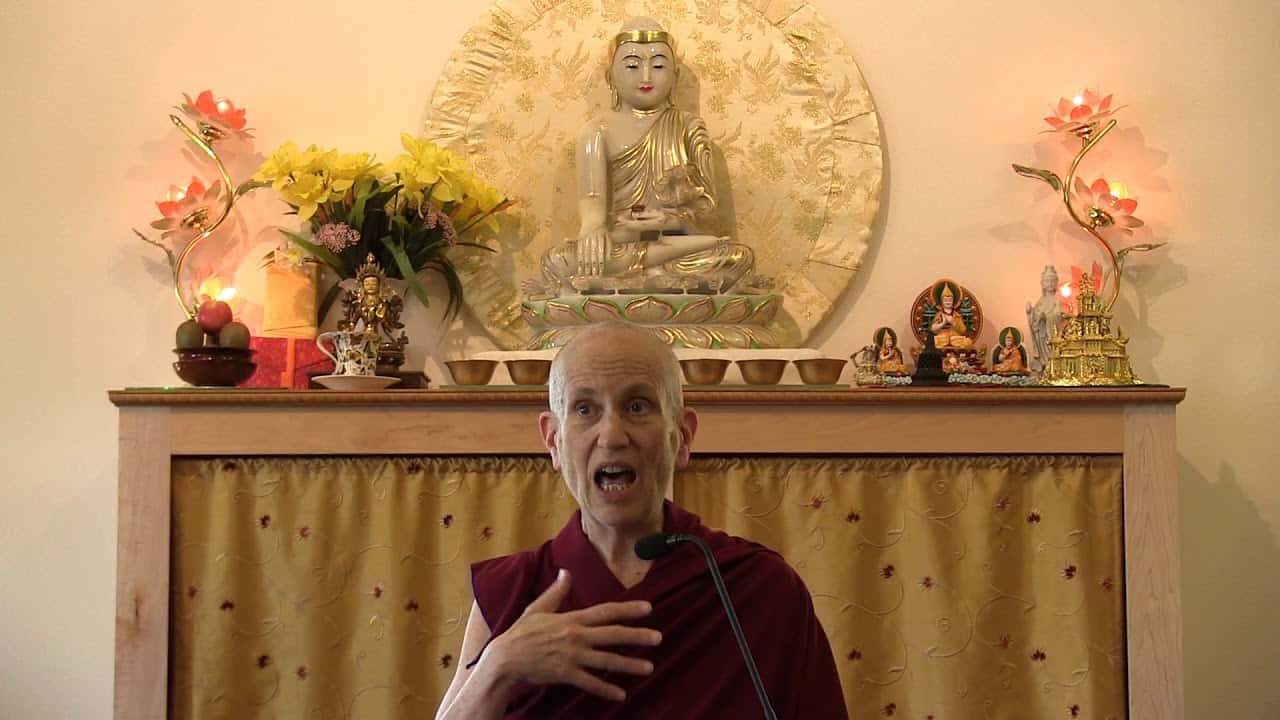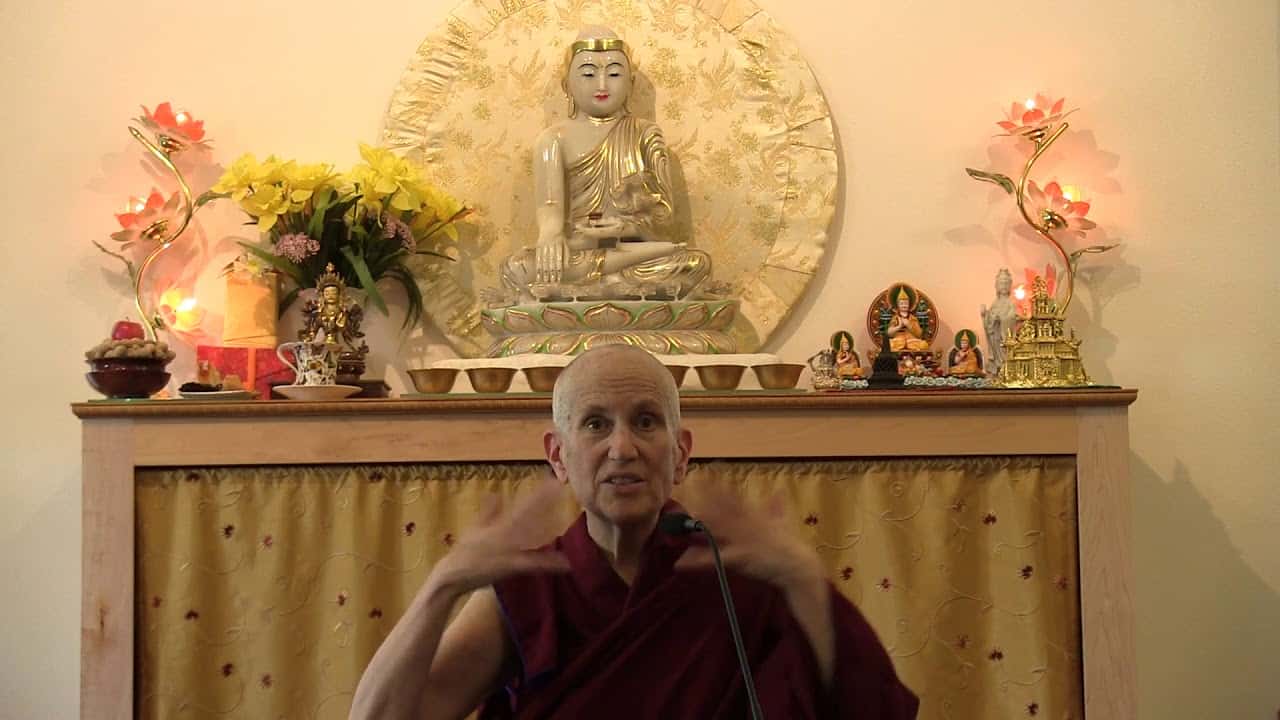How to meditate on insight
The text turns to training the mind on the stages of the path of advanced level practitioners. Part of a series of teachings on the Gomchen Lamrim by Gomchen Ngawang Drakpa. Visit Gomchen Lamrim Study Guide for a full list of contemplation points for the series.
- Clarifying between mutually exclusive, contradictory, dichotomous
- Understanding same, different, same nature, different natures
- Conventional existence, conventional truths, ultimate existence, ultimate truths
- The relationships between objects
- The divisions and types of insight
143 Gomchen Lamrim: How to Meditate on Insight (download)
Contemplation points
- What does it mean to be the same and different in this context? Use the example of having one and then multiple thermoses to help define these terms. Now make up some of your own examples.
- What does it mean to be “one nature” with an object? Describe why veiled and ultimate truths are not one, but they are one nature. Are the seed and the sprout one? Are they one nature? Permanent and uncompounded? Make other examples to better investigate these terms.
- Investigate the difference between truths and existents:
- What does it mean to be conventionally or ultimately existent? What exists conventionally? Ultimately? Does emptiness exist conventionally or ultimately, and why?
- By contrast, what does it mean to be a conventional or ultimate truth? Make examples of each kind of truth.
- Why does an object’s not being able to bear ultimate analysis NOT mean that it is negated by that same reasoning? What is in the purview of ultimate analysis and why? Explain how the object and the ultimate nature of the object are one nature, but perceived by different cognizers.
- What is meant by saying that emptiness is beyond comprehension? Why is thinking about emptiness conceptually an important part of realizing it?
- Why is it that serenity and insight are often practiced separately? How do we combine these two to bring them into union?
Venerable Thubten Chodron
Venerable Chodron emphasizes the practical application of Buddha’s teachings in our daily lives and is especially skilled at explaining them in ways easily understood and practiced by Westerners. She is well known for her warm, humorous, and lucid teachings. She was ordained as a Buddhist nun in 1977 by Kyabje Ling Rinpoche in Dharamsala, India, and in 1986 she received bhikshuni (full) ordination in Taiwan. Read her full bio.


